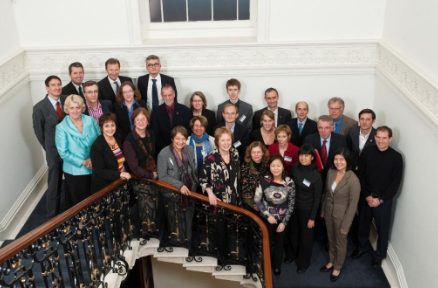Phase one: A Different way of thinking
The first phase of the New Synthesis (NS) was the result of the work of six countries and 200 participants from a broad spectrum of academic disciplines including ecology, psychology, complexity theory, dynamic systems as well as the traditional disciplines of governance, political science, economics and public administration. This work led to a conceptual framework that brings together the role of government, citizen and society in dynamic and interactive interrelations that transform society. The NS framework equips practitioners with a holistic mental map of the role of governments in society and expands the range of options open to them to bring about the desired public policy outcomes.

“What is different about serving and governing in the 21st “century compared to prior times”
Phase two: A different approach to problem solving

“What can be done to ensure that the capacity of government and society to invent solutions will keep pace with the increasing complexity of the world we live in?”
During the second phase, the NS framework was used by more than 1000 practitioners from various countries including Australia, Brazil, Canada, Denmark, Finland, Estonia, Malaysia, the Netherlands, Singapore, the United Kingdom, and other EU member states. This work validated the relevance of the early findings and generated the NS exploratory cycle; a systematic approach to invent solutions to problems that cannot be solved without using the levers of the state.
Phase three: Capacity building
Started in 2019, this phase recognizes that several factors are accelerators of change that transform the economic, societal, political, and environmental landscapes. This includes the digital and the info-bio technological revolutions, climate change , high impact catastrophic events emerging from the physical world , as well as issues resulting from imbalances between the economic , social and environmental spheres of life such as rising inequalities, changing social norms , aging population and population migrations , etc.
This phase recognizes governance as a collective effort and a shared responsibility for results. Government bears the responsibility to ensure that the overall balance of private, public and civic actions serve the overall interest of society.
“What can be done to build the capacity for collective problem solving and the collective will to build and share a better future together?”






